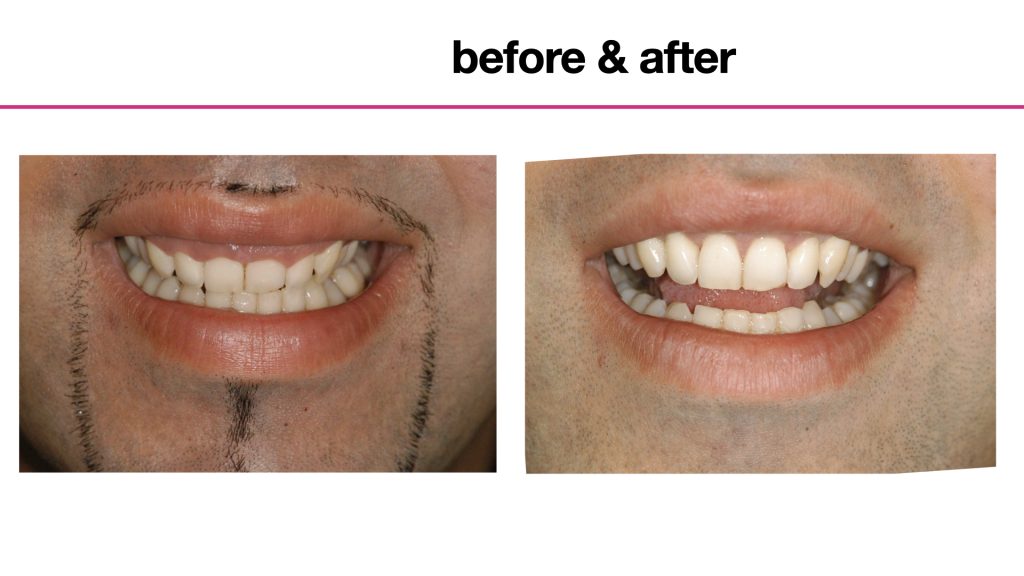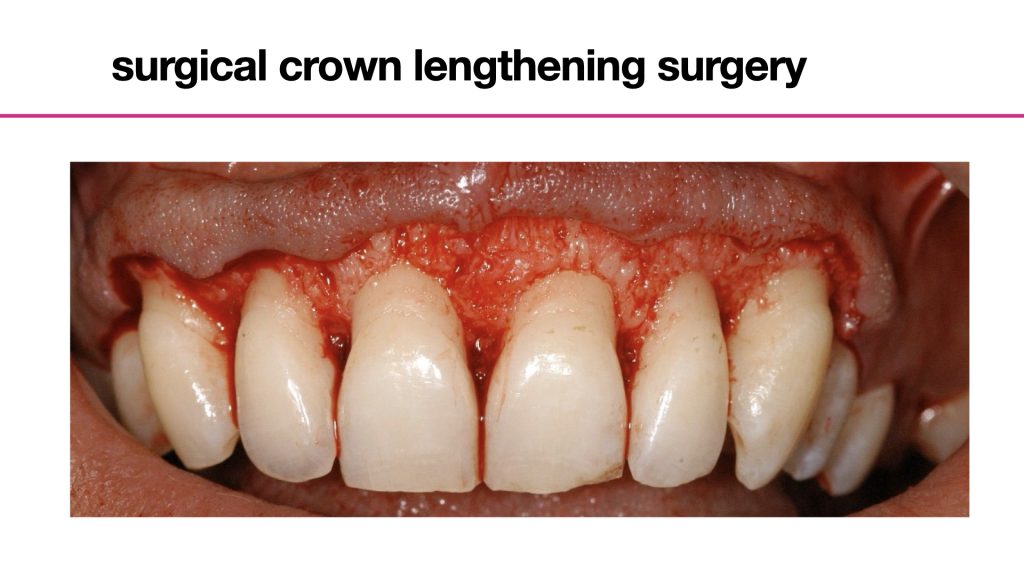Crown lengthening, an indispensable skill for daily practice
Featured Products Promotional FeaturesPosted by: Dental Design 21st July 2022

To restore teeth and achieve a result that is clinically successful and aesthetically pleasing, crown lengthening may be required. As surgical skills go, it is an incredibly useful one for the general dentist to have, with a range of indications and contra-indications for treatment, that are wider than restorative needs. It can be used as a means to access subgingival caries or access a perforation in the coronal third of the root, as well as to correct a gummy smile, for example.[i]
During the procedure the soft or hard tissue, or both, will be manipulated and adjusted to increase the amount of supragingival tooth structure. Achieving a good outcome will require up-to-date skills and knowledge and the dentist must have taken various considerations into account before proceeding, such as periodontal health. Results can then be predictable, periodontal health can be maintained and aesthetics greatly improved. Also, if the patient is having a new restoration fitted, there will be enough structure left to support it for a long time, as long as they practise good daily hygiene and attend regular reviews.


Tooth wear, a growing problem
An amount of tooth wear, broadly defined as non-carious surface loss, is normal and expected. But people are living longer and, as the impact of wear accumulates with age, there will be more patients presenting with wear that is affecting their quality of life. Tooth wear can lead to a range of situations which can – in isolation, or combination – affect the dentition and smile aesthetics. Common complaints associated with wear include inefficient mastication, pain in the jaw and sensitivity; on the aesthetics side, it can give a dull, pitted or discoloured appearance to the teeth.[ii] Even if tooth wear has not led to functional problems, a patient may have come to the practice because they are unhappy with their smile. The importance of an attractive looking, as well as healthy smile, must never be underestimated. It plays a major part in an individual’s psychological and emotional wellbeing, and willingness to engage with others, no matter how old they are. Tooth wear isn’t just an age-related issue though, as there is a growing number of younger patients including children showing unexpected patterns of wear, surface loss that is primarily due to acid erosion.[iii] Treatment will be focused on protecting the remaining dentition and prevention of further wear, but restorative care may be required.
Worn, shortened teeth can be difficult to restore and, in some cases, surgical crown lengthening can help make the process easier and support a successful outcome. If wear has led to a fracture, for example, by carefully lengthening the crown the dentist will not only be able to achieve a good fit for the new restoration but capture enough structure to enable it to attach firmly and remain stable. A proper fit will also mean it can be kept beautifully clean, as long as the patient has been shown how to perform elevated oral hygiene and is motivated to do so, between appointments.
A procedure for everyday practice
The management and treatment of tooth wear is therefore an example of where crown lengthening can be applied in everyday practice, and a key reason why being able to deliver this procedure will have huge benefits to you, and your patients. To utilise it correctly, a dentist must have knowledge of concepts like biological width, as well as the technique(s) for successfully crown lengthening. Treatment planning and case evaluation must be comprehensive, and the pre-surgical evaluation will consider things like periodontal health also gingival biotype, root anatomy, crown-to-root ratio and the presence of caries. Radiographic assessment and bone sounding will also be required to ensure that the bone is of sufficient height, width and density to facilitate the change in gingival volume.
Crown lengthening can be part of a gold standard treatment plan for tooth wear, delivering a predictable result. The Surgical Crown Lengthening Hands-on course with BPI Dental Training & Education is a terrific option for any clinicians looking to substantially develop their knowledge and skills in this area. The training covers all the concepts around tooth wear as well as the surgical procedures themselves. Crown lengthening is not only incredibly useful as a skill in itself, but it involves surgical techniques that can be applied to other parts of dentistry.
Crown lengthening has a range of indications, including to increase clinical crown height to restore teeth impacted by wear. Dentists will see more patients who want a solution for the functional and aesthetic impacts of wear, not only due to increased retention of teeth in old age, but also the increase of accelerated wear among younger patient populations. Surgical crown lengthening can facilitate the easier restoration of worn teeth. It can facilitate preparation, support success, predictability, and treatment stability to ultimately deliver a beautiful, functional smile.
For more details or to book your place on the next Surgical Crown Lengthening course with Dr Boota Singh Ubhi, please visit https://bpieducation.co.uk/dental-courses/surgical-crown-lengthening/
[i] American Academy of Periodontology. AAP Connect. Crown Lengthening. Glossary of Periodontal Terms. https://members.perio.org/libraries/glossary?ssopc=1 (accessed March 2022).
[ii] Mehta SB, Banerji S, Millar BJ, Suarez-Feito JM. Current concepts on the management of tooth wear: part 1. Assessment, treatment planning and strategies for the prevention and the passive management of tooth wear. British Dental Journal. 2012 Jan 14; 212 (1): 17-27.
[iii] Harley, K. Tooth wear in the child and the youth. Br Dent J 186, 492–496 (1999). https://doi.org/10.1038/sj.bdj.4800150








